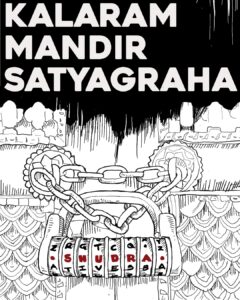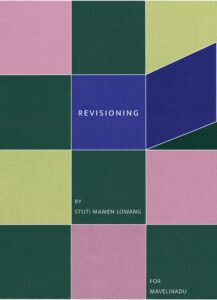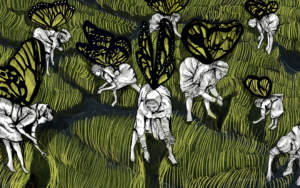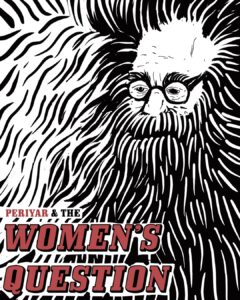Anti-caste consciousness is a source of belonging and liberation, as people who are pushed into exclusion are able to find and assist each other.
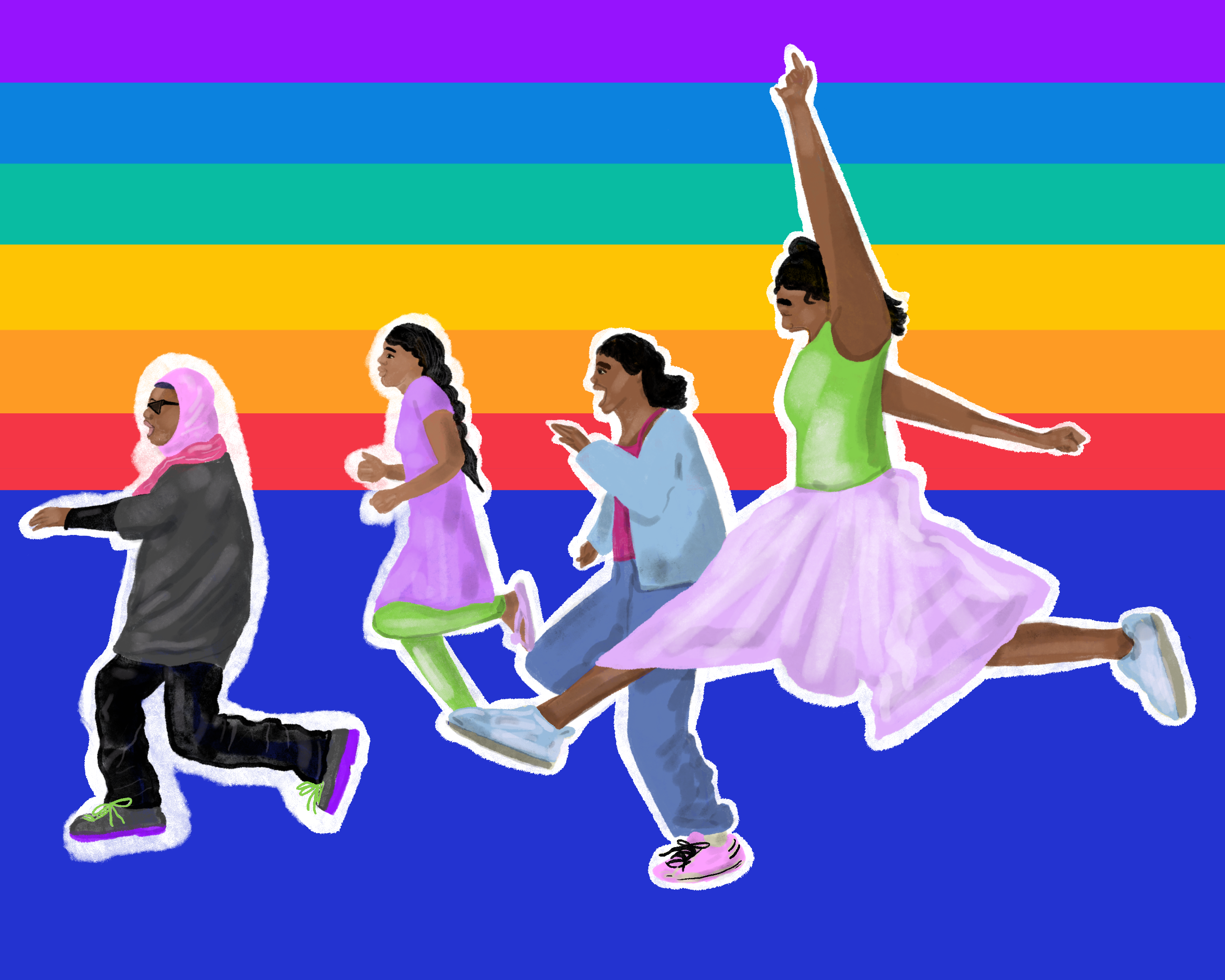
Illustration by Shrujana Shridhar
Note: Pseudonyms (Anjana, Meghna, Suresh, Rahul, and Rina) have been used to maintain confidentiality of the participants in this essay. All the participants identify as members of the DBA community, and some of them identify as queer as well.
In December 2021, I sat on my friend’s balcony with another person as we hotly debated reservations and caste-based discrimination. As someone who availed reservations, I didn’t want to put in extra labour to educate others, and my upper-caste friend noted that. I always think about how caste has mediated my friendships, and how every discussion around caste makes me feel angry and scared. My name led to so many problems as my middle name – Anand, is my father’s name. If I don’t use my surname at times, people read me off as a Brahmin and are shocked to find that my surname – Kushwah, is a backward caste.
Caste is present in our behaviours, our visceral opposition to reservations, our treatment of domestic workers, and our shutting down of any critiques of systemic inequalities. Take a look around your cities, and you will find caste festering in our shiny malls (Jyoti, 2017). Furthermore, respectability politics becomes a stand-in for caste markers when identifying partners and friends. So many of us hide our social locations to assume desirability. “…We change our last names so we can get jobs and rent houses. We lie about our caste, so our friends, classmates and teachers don’t think we are lesser than them…We study Ambedkar and try to live by his values, but many of us don’t.” (Dutt, 2019)
Lately, my friendships have been heavily influenced due to my positionality as a queer, non-binary Bahujan individual and the notion of a shared anti-caste consciousness, as caste mediates caring within friendships. It also brings up the idea of ‘care ethics,’ (largely a significant part of my research interest) which emphasises the relationship and power dynamics between the two people caring for each other in a given space. Through this essay, I will be looking at how the boundaries of our friendships are mediated by caste, class, and gender, using interviews I conducted with x Bahujan queer individuals. In the study that formed the basis for this essay, most participants found friendships in mutual respect, shared commonalities, and differing power dynamics. Exploring how caste determines friendship can also lead to deeper intimacy as people become more sensitive once they’re aware of one’s social location, leading to intimate forms of caring within friendships. Platonic intimacy here lies in sharing the same space with friends, without the labels and social obligations of being in a romantic relationship with someone. Part of this is also holding people accountable for their actions and when they are being unhealthy or violent in their forms of caring.
For one of my participants, Suresh, friendship is a space of healing and he loves Dalit queer people as there is a sense of reclamation of identity, and formation of friendship based on shared anti-caste consciousness. Another participant, Anjana, found friendships liberating and wished to centre them in her life. Caste is pivotal in producing and reproducing the ‘right’ kind of heterosexual coupling through marriage, so it becomes crucial to find an alternative avenue of care that particularly challenges marriage. The participants also discussed if they subconsciously tilt towards forming relationships or friendships with people from castes other than theirs, either to escape their living reality or forge a better one. It then brings up the question of whether one should assert their identity or hide it? For DBA queer people, there will always be some relationship between love and oppression, which in turn, shapes their friendships and intimacies.
CASTE & FRIENDSHIP: INTERSECTIONALITY, COMING OUT, & RESERVATIONS
In her interview, Meghna highlighted the lack of commonalities between marginalised and privileged castes, and such friendships are often transactional. Some axes like mental or physical disability were a source of connection but they didn’t always cross the caste-class barrier. Another participant found friendship as a space for social and political comfort, and Rahul saw friendship as a liberating space with pressures of the futures , and reproduction that is present in families. Queer friendships are complex because being queer is not a monolithic identity, but one that needs to be intersectional in thinking about it, since our identities and experiences are interlocking and co-constitutive, akin to a messy khichdi.
Among the participants, there was a consensus that there’s a need for intersectional language as we’re not homogenous identities. Most of the participants got access to this knowledge either through their educational institution in a metropolitan city, social media or if the region had a history of anti-caste politics. For some, it was leftist literature (intricate but challenging to understand). On social media, Dalit people are doing free labour for education on caste and queerness. There’s no doubt that social media provides affirmative space for cultural articulation by historically oppressed communities. Having said that, anti-caste activism on social media is also away from the sarvarna gaze and the english hegemony. Suresh also mentioned that many DBA people don’t know about bhim or Ambedkarite politics as historically, since knowledge creation has been by the upper castes.
“Coming Out as Dalit is primarily an act of bearing witness to what it means to be Dalit in a grossly unfair society. For some of us being Dalit means a lifetime of discrimination and abuse. For others, it means being able to use constitutional reservation to better our lot” (Dutt, 2019). There has been a lot of debate around asserting or hiding one’s identity. In her interview, Rina stated her identity was revealed once when she got a medal in her UG college, and an upper caste friend asked her about availing reservations. Suresh spoke about being ‘outed’ by other people, as they know he accessed reservations and ‘coming out’ in such situations is inevitable. He also broke a friendship with a childhood friend who was being casteist and said, “waise bhi, you have the certificate, tumko mil jayega (anyway, you have the certificate, you’ll get it)” Anjana shared how she did not celebrate the joy of clearing an exam because a person from a privileged caste was crying who couldn’t pass the exam, and a friend asked them to celebrate.
‘Coming Out’ (in terms of queer identity rather than caste location) is convenient for elite queers as most people see reservation as something whose removal would lead to a casteless world, without having any idea of the historical injustice met to marginalised communities, it also involves shame and danger. For many DBA queers, “coming-out” as Dalit has been more difficult a journey than “coming-out” as queer. You won’t see many of us in your fancy parties that imagine inclusivity through gatekeeping. Some of us might secure entry because we have claimed some access through education and mobility. When a Dalit Bahujan queer person chooses coming out of the closet over declaring their Dalit Bahujan identity, it is important to understand why this fear still heavily shadows their expression, their consumption, and their choices as a whole (DQ: Disqualified Dalit Queerness).
Merit in itself is seen as an upper caste virtue (Subramaniam, 2019). Because of this, marginalised students have to work twice as hard as their UC counterparts to make their own space all the while negotiating caste every second of their life. Rina also shared the difficulty in explaining that reservation is for representation, and not a poverty alleviation scheme. The participants mentioned how there is conversation on caste in their university but no work is being done towards inclusion. On the contrary, students do share anti-reservation views or the view that marginalised castes bring down the average score of the university but these issues are not taken up.
CASTE THROUGH FRIENDSHIP: POWER DYNAMICS, PRIVILEGE, & TOKENISM
The caste difference also becomes visible in friendships when the class status comes up during conversations. There is already competitiveness and power-dynamics based on caste-class axis; is it here that friendship can offer meaningful space to reach a level of equity. But this requires being receptive to one’s own privilege. On the contrary, most upper castes appear casteless by converting caste capital into ‘modern’ capital, which becomes a marker of their class or financial capability. Rina, for instance, mentioned how there’s a vast difference between her and her upper caste friends in the way they spend money when they go out. Unfortunately, queer people don’t acknowledge marginality based on caste, despite the fact that the queer movement owes immensely to the anti-caste movement. The culture that one needs to present oneself as part of is not readily accessible or affordable for DBA queers, and this leads to exclusion. Caste visibilises itself through markers of beauty, attractiveness, and good background, which impact desire and whom we form friendships with.
It’s not just reservation that lends to political differences, but also social capital – one’s clothes, body language, manner of speaking English language that are indicative of one’s caste and class. Within a collective that Meghna formed, sometimes her juniors from well-to-do families exert influence over them. They command their appearance, and power relations are skewed based on access to social capital. One of the arguments put forward by one of the participants was to locate confidence through an intergenerational lens, similar to how we locate intergenerational trauma. The participants also registered a sense of annoyance with their friends and peers from upper castes and upper class as they were completely oblivious to the privilege they get through intergenerational wealth. And caste is the same everywhere, it’s an integral component of our largely heteronormative world where there are power differentials on multiple levels. Further, the intergenerational nature of discrimination stays even when one moves from a rural area to an urban space (Ponniah and Tamalapakula, 2020). Friendship across caste and class then holds the space where the negotiation becomes more accessible, where caring can be performed.
Through the interviews, participants discussed how people don’t pursue relationships with them because they don’t want to actually practise anti-caste consciousness, but want to profit off their minority identity through inviting them to write papers as co-authors. Queerness therefore needs to be followed closely by transformation based on anti-caste principles, which requires a change in material reality. While most participants agreed that friendship does rest on space for visibility and receptiveness of political opinion, as these both shape the way we care for each other, there was one issue – tokenism. There was a general consensus that people were often tokenistic towards representation to gain brownie ‘woke points’ but didn’t really understand intersectional feminism. DBA queer authors have also opined how many friends/acquaintances would use the author’s queerness and sexuality to win an argument about homosexuality, or to escape the label of prejudice.
CAST(E)ING FRIENDSHIP: LOCATING DESIRE & ALTERNATIVE FORMS OF CARING
The participants agreed that caste in a way limits your desire or whom you can desire. As Rahul said, “caste can pre-configure your desire”. This makes it even more crucial to ask how and what friendship can offer, and find networks of care beyond family and marriage. The social theorist bell hooks writes that women who have such close friendships “want these bonds to be honoured cherished commitments, to bind us as deeply as marriage vows.” As DBA queers, we ask to extend it even beyond that. DBA queers are demanded that they leave a part of themselves outside when they enter these spaces and if one brings up caste, they are blamed as the one seeding caste inside an otherwise ‘egalitarian’ setup.
Many DBA queers advocate for models of partnership based on friendship rather than the brahmanical institution of caste because “caste pre-constitutes desire, curtailing its radical potential for self and societal transformation” (Ponniah and Tamalapakula, 2020). Dalit queer academic Dhiren Borisa writes, “who desires, whom you desire, who gets to desire and whose desirability counts is a manifestation of caste.” One of the dominant arguments against marriage comes from anti-caste perspectives because the ideas of advocating for marriage are structured and moderated by privileged queers. Queer caste elites are divorced from the realities of caste and marriages in India (Ponniah and Tamalapakula, 2020). The same-sex rights discourse in India places queerness with castelessness as a universal experience. While the most marginalised people might be a part of the conversations, they are not leaders even though the caste-queer struggle has been led by Bahujan transpersons for decades (Jyoti, 2017). The mere notion of solidarity with other social movements is not enough when a handful of savarna gay men represent the queer community.
One way of locating desire and finding alternative forms of care is through understanding that anti-caste solidarities also connect people, and can create a community. Friendship can also be built at protest sites. India has a history of formation of student groups around common anti-caste activism and also openly critical of upper-caste culture of their campuses (Subramaniam, 2019). Meghna also discussed how anti-caste consciousness did open new communities, in this case a study circle, and this community gave her confidence and a sense of belonging. Further, it extended to other progressive movements, reminding her of the importance of building alliances across movements and the positive aspects of anti-caste solidarity. One result of such mobilisation is formation of a ghetto led by minorities within hostel spaces, which become so popular that upper caste people become curious and start engaging with them and learning.
Anti-caste consciousness is a source of belonging and liberation, as people who are pushed into exclusion are able to find and assist each other. Even if they start with conflicting political opinions, if one is receptive, there can be a loving community of care, subverting the brahminical structure that only sees us suffering. There are alternative ways of being outside the brahmanical system, that does not require us to assimilate or conform in order to belong, both in terms of our caste and our sexuality. There’s hope in anti-caste politics, and friendship based around the same is about finding safe spaces within newer, less rigid, revolutionary forms of care, where desires can be expressed without any limitation by normative conventions.
While conducting this study, I couldn’t help but rethink my own position with all of my friends and what all changed when they came to know about my caste location or when people on dating apps would just ask me, “Are you a Brahmin?”. Being queer is already tough and comes with a lot of social hurdles, the additional pressure of your caste only makes it worse. There may be a sense of uncertainty that comes with this way of queering friendships. Even when queerness feels uncertain, it endures and friendship is offered everyday. When other forms of caring are based round caste and blood, friendship is still one way to grow out of these conventions. Therefore, we need to reflect upon and evaluate friendships that cross caste and class lines with honesty and accountability, so that we may build genuine connections of solidarity and care.
To learn more about queerness, caste and its manifestations, engage with the works of Dhiren Borisa, Meena Kandasamy, Jyotsna Siddharth, Grace Banu, Priyanka Paul, Upendra Baxi, and Satish Despande, among others.
¹ The term DBA refers to Dalit, Bahujan, and Adivasi People
² Dutt, Y. (2019). COMING OUT AS DALIT. Aleph Book Company.
³ Ajantha Subramanian, The Meritocrats: The Indian Institutes of Technology and the Social Life of Caste in MAPPING THE ELITE: POWER, PRIVILEGE, AND INEQUALITY 37-70 (2019).
⁴ Ponniah, U., & Tamalapakula, S. (2020). Caste-ing Queer Identities. NUJS L. Rev., 13, 1
⁵ Jyoti, D. (2017). Being a Queer Dalit, and the Assertion of Dalit Identities in Pride Marches. Feminism in India.
⁶ At IIT Madras, OBC and Dalit students came together in 2014 to form the Ambedkar Periyar Study Circle (APSC). At the University of Hyderabad, Dalit students had formed the Ambedkar Student Association (ASA) much earlier, in 1993, but it was reactivated in the new political climate.
⁷ Subramanian, A. (2019). The Caste of Merit.

